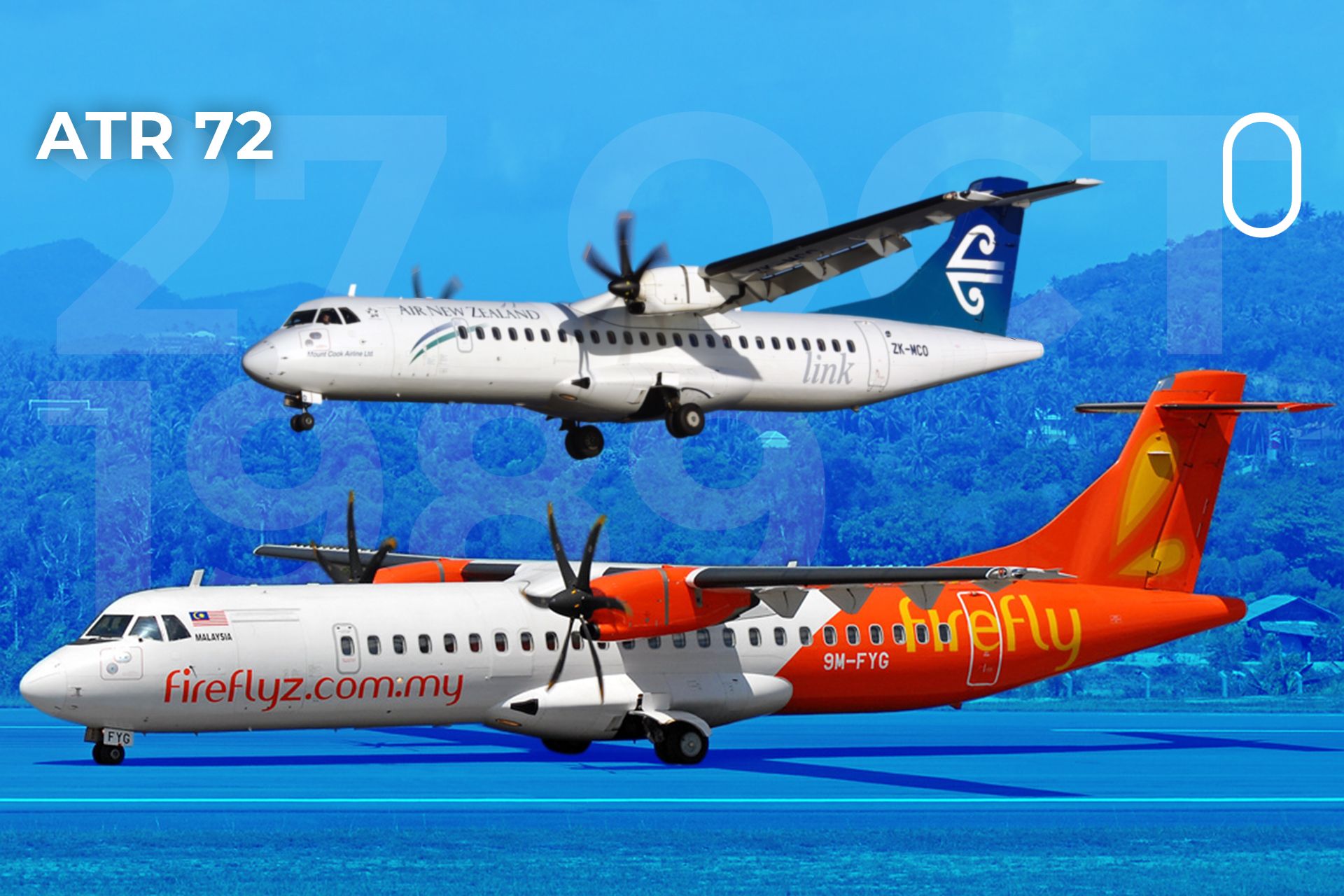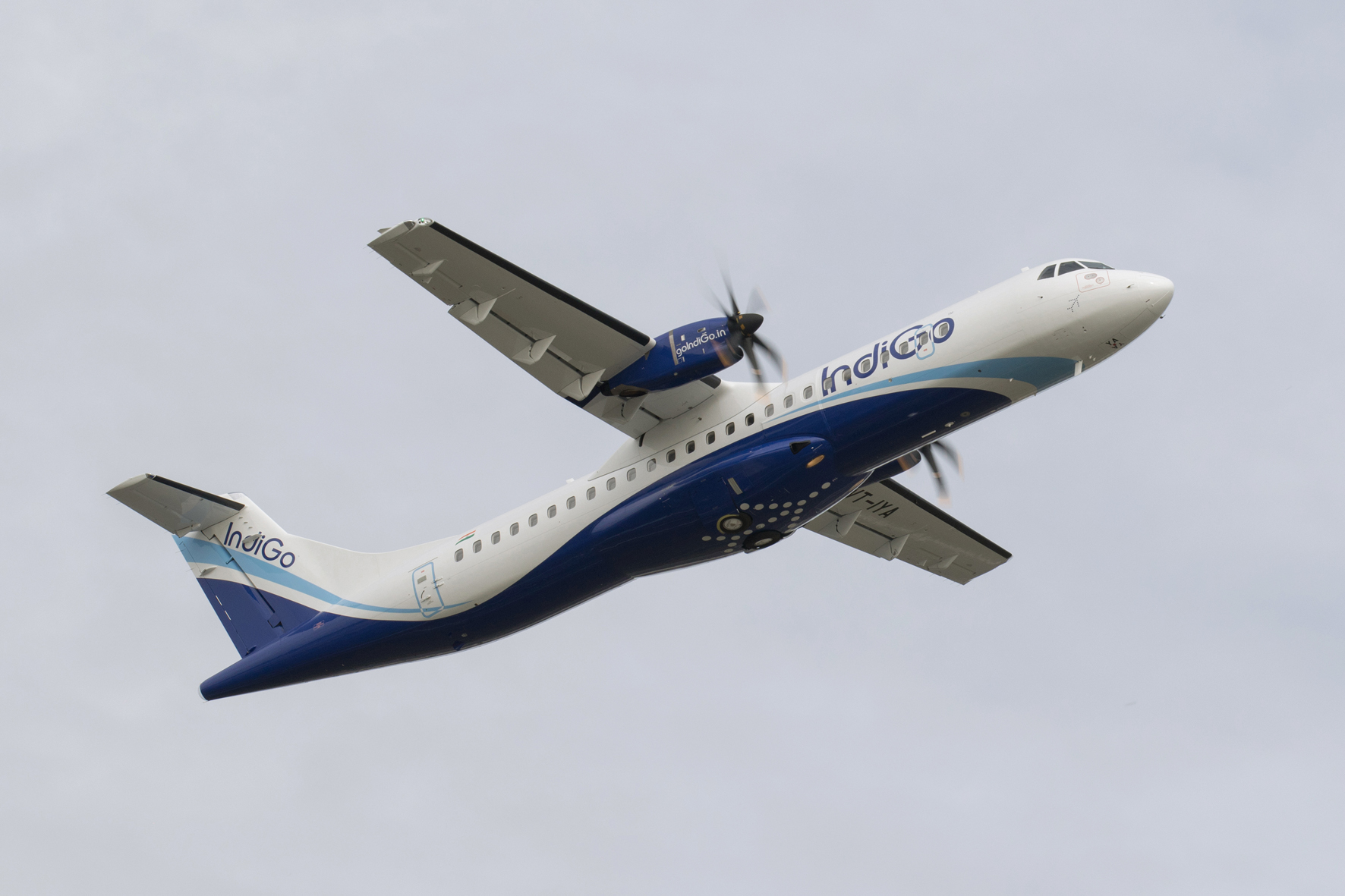ATR 72 Aircraft Overview

The ATR 72 is a popular regional turboprop aircraft renowned for its versatility and efficiency. Designed for short-haul routes, it caters to various operators, including airlines, cargo carriers, and military services. This aircraft boasts a unique blend of features that make it a reliable and cost-effective choice for regional air travel.
Design and Key Features
The ATR 72 features a high-wing configuration, providing excellent visibility for pilots and passengers. Its twin-turboprop engines, typically Pratt & Whitney Canada PW127 series, deliver efficient power, contributing to the aircraft’s fuel economy and low operating costs. The aircraft’s robust construction allows it to operate from unpaved runways, making it suitable for a wide range of destinations. The ATR 72’s spacious cabin can accommodate up to 78 passengers, offering a comfortable and enjoyable travel experience.
History and Development
The ATR 72 is a product of the joint venture between Aérospatiale of France and Alenia Aermacchi of Italy, now known as ATR. The aircraft’s development began in the 1980s, with the first flight of the ATR 42 (the smaller version) occurring in 1984. The ATR 72 followed in 1988, entering service in 1989. Since then, the ATR 72 has undergone numerous upgrades and modifications, leading to several variants with improved performance and features.
ATR 72 Variants
The ATR 72 family comprises several variants, each tailored to specific operational requirements. Here’s a breakdown of some prominent variants:
- ATR 72-200: The initial version, introduced in 1989, with a passenger capacity of 68-74 and a range of 1,380 km (857 mi).
- ATR 72-210: An upgraded version with improved avionics and increased range, reaching 1,500 km (932 mi), while maintaining a passenger capacity of 68-74.
- ATR 72-500: This variant introduced in 2007 features a new wing design and more powerful engines, resulting in improved performance and fuel efficiency. It boasts a passenger capacity of 66-74 and a range of 1,528 km (949 mi).
- ATR 72-600: The latest version, launched in 2010, features a fully redesigned cockpit with a glass panel, enhancing pilot workload and situational awareness. It also boasts improved fuel efficiency and a passenger capacity of 68-78, with a range of 1,570 km (976 mi).
ATR 72 Operations and Applications: Atr 72 Plane

The ATR 72, a versatile turboprop aircraft, is renowned for its adaptability to diverse operating environments and its suitability for a range of applications. Its fuel efficiency, robust performance, and passenger comfort make it a popular choice for regional airlines, commuter services, and even specialized operations.
Operating Environments and Applications
The ATR 72 thrives in various operating environments, showcasing its versatility and efficiency. Its primary applications include:
- Regional Routes: The ATR 72 excels on regional routes, connecting smaller cities and towns to major hubs. Its short takeoff and landing capabilities allow it to operate from smaller airports with limited runway infrastructure, making it ideal for serving communities that lack direct access to larger aircraft.
- Short-Haul Flights: The ATR 72’s fuel efficiency and relatively short range make it an excellent choice for short-haul flights, typically within a few hundred miles. Its speed and comfort provide a viable alternative to smaller propeller aircraft while offering a more economical option compared to larger jets.
- Commuter Services: The ATR 72’s versatility extends to commuter services, where it can connect smaller towns and cities to larger metropolitan areas. Its frequent departures and arrivals cater to the needs of business travelers and commuters seeking efficient and reliable transportation.
Advantages of Using the ATR 72
The ATR 72 offers a compelling combination of advantages that make it a desirable aircraft for various applications:
- Fuel Efficiency: The ATR 72’s turboprop engines are known for their exceptional fuel efficiency, resulting in lower operating costs compared to jet aircraft. This advantage is particularly relevant for regional airlines and operators operating in competitive markets.
- Versatility: The ATR 72’s adaptability to various operating environments and its ability to serve diverse routes make it a highly versatile aircraft. It can operate from paved and unpaved runways, navigate challenging terrain, and cater to a range of passenger demands.
- Suitability for Challenging Terrain: The ATR 72’s robust performance and short takeoff and landing capabilities make it suitable for operating in challenging terrain, including mountainous regions and areas with limited runway infrastructure. This attribute expands its reach to underserved communities and destinations that may be inaccessible to larger aircraft.
Examples of ATR 72 Operators
The ATR 72 has gained widespread acceptance among airlines and operators worldwide, serving as a vital component of their fleet strategies. Some notable examples include:
- Flybe (United Kingdom): Flybe, a former regional airline, operated a significant fleet of ATR 72s, primarily serving routes within the United Kingdom and to destinations in Europe. Their operations showcased the aircraft’s suitability for short-haul flights and its ability to cater to a diverse passenger base.
- Air Dolomiti (Italy): Air Dolomiti, an Italian regional airline, utilizes ATR 72s for its regional network within Italy and to destinations in Europe. Their operations highlight the aircraft’s fuel efficiency and its ability to serve smaller airports, connecting communities across the country.
- United Airlines (United States): United Airlines, a major U.S. airline, operates a fleet of ATR 72s through its regional subsidiary, United Express. These aircraft serve regional routes within the United States, connecting smaller cities and towns to larger hubs. Their operations demonstrate the ATR 72’s ability to seamlessly integrate into a larger airline’s network.
ATR 72 Safety and Reliability

The ATR 72 has a strong reputation for safety and reliability, consistently ranking among the safest regional aircraft types. This reputation is a result of a combination of factors, including its robust design, stringent maintenance procedures, and comprehensive pilot training programs.
Safety Record and Accident Statistics, Atr 72 plane
The ATR 72 has a commendable safety record, with a low rate of accidents compared to other regional aircraft types. This is attributed to a number of factors, including its robust design, stringent maintenance procedures, and comprehensive pilot training programs. The ATR 72 has a strong safety record, with a low rate of accidents compared to other regional aircraft types. This is attributed to a number of factors, including its robust design, stringent maintenance procedures, and comprehensive pilot training programs.
Factors Contributing to Safety and Reliability
- Robust Design: The ATR 72 is designed with a focus on safety and reliability. Its twin-engine configuration provides redundancy, meaning that the aircraft can continue to fly even if one engine fails. The aircraft also features a high-wing design, which provides excellent ground clearance and visibility for the pilots.
- Stringent Maintenance Procedures: ATR aircraft are subject to stringent maintenance procedures, which are designed to ensure that the aircraft are kept in top condition. These procedures include regular inspections, maintenance checks, and component replacements.
- Comprehensive Pilot Training Programs: ATR pilots undergo rigorous training programs that prepare them to handle a wide range of situations, including emergencies. This training includes flight simulator sessions, which allow pilots to experience real-world scenarios in a safe and controlled environment.
Comparison with Other Regional Aircraft Types
The ATR 72’s safety record compares favorably to other regional aircraft types. Studies have shown that the ATR 72 has a lower accident rate than other regional aircraft types, such as the Bombardier CRJ and the Embraer ERJ.
Safety Enhancements and Improvements
ATR has continually invested in safety enhancements and improvements for its aircraft. These include:
- Advanced avionics systems: These systems provide pilots with real-time information about the aircraft’s performance and the surrounding environment, which can help them to avoid potential hazards.
- Enhanced safety features: These features include ground proximity warning systems, stall warning systems, and automatic flight control systems. These features help to prevent accidents and ensure the safety of passengers and crew.
- Ongoing research and development: ATR continues to invest in research and development to improve the safety and reliability of its aircraft. This research includes investigating new technologies and materials that can enhance the safety of the ATR 72.
The ATR 72 plane is a popular choice for regional airlines due to its versatility and fuel efficiency. It’s interesting to note that while the ATR 72 is focused on practicality, the world will be focused on a different kind of efficiency tonight with the abc presidential debate time.
Just as the ATR 72 prioritizes safety and smooth landings, we can hope for a debate focused on clear communication and thoughtful discourse.
The ATR 72 plane, with its regional capabilities, often serves as a vital link between smaller communities. This focus on connectivity resonates with the recent abc presidential debate , where transportation infrastructure and its impact on rural areas were discussed.
Just as the ATR 72 connects communities, a well-developed transportation system can connect people to opportunities, ultimately fostering a sense of belonging and economic growth.
